By N. Niranjan Nikam
Driving on the Mysuru-Bengaluru Highway as one crosses Mandya, the sugar bowl of the State, near Budanur, on the left is a supermarket which attracts the eye by its very name ‘Organic Mandya.’ The story of this supermarket and the man behind it, who has returned to his roots, is a tale of understanding, sacrifice and wanting to do something to the farming community. Now read on…—Ed
Studying in the prestigious PES College of Engineering in Mandya and graduating in Electronics and Communication, like most techies, his sights were set abroad. After working in a few international companies and travelling to the US, UK, Israel, South Africa, Philippines for 15 to 16 years, his heart was set on returning to his roots.
But before this, he had even set up his own software company Verifaya Corporation in 2005, which was funded by Intel Capital, where he continues to have his interest. He is S.C.
Speaking to SOM, he said, “I was born in Mandya and grew up in the 3,000-acre University of Agricultural Sciences (UAS) campus in Bengaluru where my father Dr. Chikkadevaiah, who also became the in-charge Vice-Chancellor of UAS, was working. It was pure bliss in a completely rural setting amidst the cacophony of a capital city. After passing out of PES Mandya I worked in companies like Wipro Technologies, NESS Tech.”
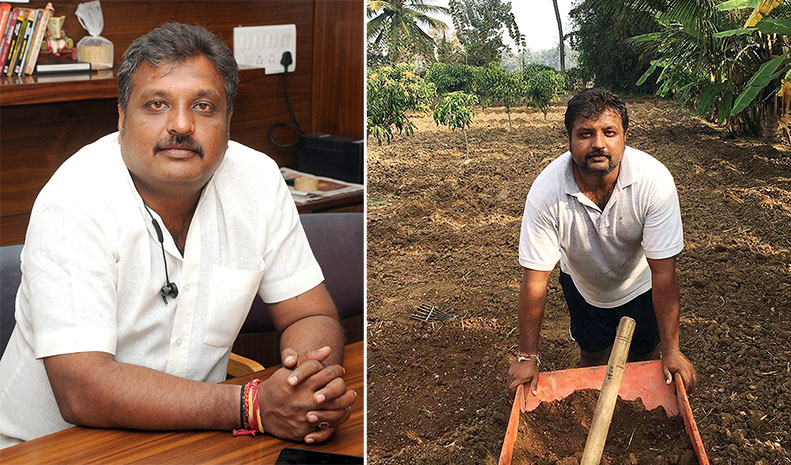
Returning to Mandya, his hometown in 2014, his goal was to become a farmer and make honest living. However, after observing hardships suffered by farmers on a day-to-day basis, he changed his mind and decided to do something about the situation for the collective good.
“Mandya had changed a lot. At one time it was one of the richest districts in India. I now live in Sunagahalli. I was working in my farm and one of the farmers suddenly told me, that his (farmer) grandfather used to resemble me. He used to wear jubba which had a pocket that was filled with currency notes. The grandmothers used to wear gold coin necklace (kaasina sara). People had no dearth of money in Mandya due to sustainable living as expenses were almost nil and most of them lived up to 90 – 100 years. This is what we saw during our growing up years,” Madhuchandan recalled.
All this had changed when he returned from America in 2014, as most of the youth, both boys and girls, were migrating to Bengaluru in search of jobs leaving behind their villages. He started noticing this trend when he moved around in autorickshaws and found that some of the drivers were from Mandya. When he dug a little deeper he saw that girls were working in garment factories and as maids, aged men were working as security guards, young men as delivery boys and also as cab drivers.
The migration was almost 50 to 60 per cent which was not at all healthy for the district and added to this was the farmers’ suicides. This forced him to think more about his district.
“When I returned from the US, I could not speak fluent Kannada nor write the language. Now after four years, not only can I speak the local lingo as I work in my farm with the farm labour but also write,” said Madhuchandan, who has adapted himself so well to the village life that he now looks like a typical well-built, rugged Mandya farmer.
Madhuchandan used to come to Mandya and check into a hotel and get in touch with his friends and started interacting with them to understand about the changes in the district.
“I was born in the General Hospital in Mandya in 1977. The stone building hospital is located in the centre of the 25-acre campus. As one entered the hospital in the main building and turned to the right, there were four male wards with two beds each. On the left side were four female wards with two beds each. But there were hardly any patients lying there. The population in Mandya in 1977 according to census was five lakhs. For the whole district there was just one hospital,” he reminisced.
There was a road that ran next to the hospital called Hospital Road where there was just one medical shop selling medicines in 1977. When he came in back in 2014, the population had gone up to 20 lakhs.
“That means a 16-bed hospital should become 64-bed hospital as we have progressed and since technology is there and we have become more intelligent, the bed strength should come down. Instead, the General Hospital has become a 750-bed hospital and added to this is a Medical College — Mandya Institute of Medical Sciences. Besides, there are 45 medical shops on one road and in Mandya city there are 52 private nursing homes and in the whole city, 202 medical shops. Nothing has progressed according to proportion.
Instead it has gone haywire. There are 650-plus Primary Health Centres in Srirangapatna, Nagamangala, K.R. Pet, Malavalli — all put together. What this indicates is that health of Mandya is deteriorating,” he rued.
This is not just the story of Mandya but the whole of Karnataka today. In one generation, life expectancy has gone down by 30 years. Added to this the health of the youth has deteriorated, wealth is gone and they are in deep debts and people with just two or three acres of land-holdings are migrating, is what he found in his study. But the farmers with self-respect who have become old and are not able to migrate are committing suicide setting themselves on fire in sugarcane fields.
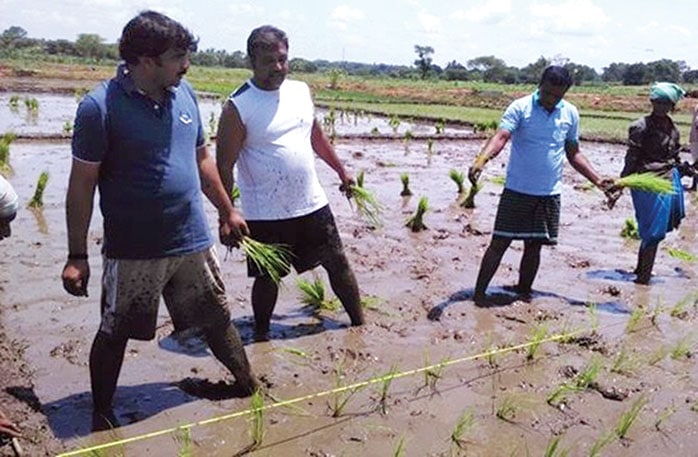
This is the reality and when one looks at the reason which our data reveals, earlier the peasants would hardly buy anything, not even tooth brush or soap bar. At the most they would buy clothes for marriages or matchbox for lighting stoves. Everything else they would produce in the village. If the men had to have a hair cut, the hair dresser would be paid five or ten seers of paddy and he would cut the hair throughout the year. Only whatever surplus they had, they would sell outside, he said.
“Hence, the outflow of money was less and income was more and therefore they were able to lead a sustainable life. They never bought any vegetables, greens, fruits, pulses, cereals, butter, ghee. Today except for rice, everything is bought from outside in the market. This itself comes to around Rs.3,000 to Rs.5,000 and how can a farmer earn this kind of money in his two or three-acre farm,” he wondered.
Thus knowingly or unknowingly everyone fell into the trap and sustainable living was out of their grasp. We did not bother to do a small bit of research on our ancient methodology, instead we just pulled out western method of living and practice and fitted it into our lives. This became a big disaster for our farmers, he said.
“The mantra we decided was, let us live like our grandparents, let us reintroduce their way of living and thinking, which is nothing but sustainable living. If you want wealth or health follow them. We have seen the consequences of new methodology like using fertilisers, chemicals or new way of living, buying from outside. Instead of sitting in a 10,000 square feet area where there is a house, why can’t one grow greens, vegetables or fruits. But, farmers have started going for walks. Villages have gyms, which is utter nonsense. Instead use your energy and grow all these yourselves. Imagine farmers buying milk instead of rearing cows which will give them milk. The cow also gives food for land, its urine-free pesticides and free urea,” Madhuchandan observed.
Genesis of Organic Mandya
When we tell people go back to the roots, that is the trend. This is much more advanced and the word ‘organic’ sells to make our farmers’ lives smooth-going. No government can help the farmer all the time. It is he who has to have the determination and set things for himself. Waiving of loan will never help the farmer. It is only a temporary measure. Sustainability is the only permanent measure,” said Madhuchandan.
“This is the genesis of ‘Organic Mandya’ which has now become a big revolution. People started coming together and we formed Mandya Organic Farmers Co-operative Society with all like-minded farmers in 2015 of which my friend Mahadev is the President,” he said.
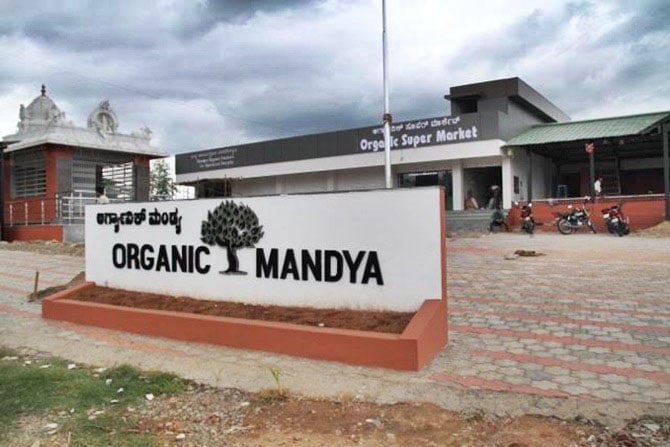
We started Organic Farmers Club in about 330 villages of Mandya district to encourage men to grow chemical-free food for their family. In each of the group there are 20-30 farmers. This was for the men who grew pulses and cereals. Then we encouraged women to grow vegetables, greens and fruits in their backyard and we started Kitchen Garden (Keere Madi) Women’s Club in about 220 villages and there are about 4,000 kitchen gardens, he said.
To encourage youth we started Organic Kabaddi Boys Team for which Mandya is always well-known in 60 villages and are conducting Organic Cup tournaments. That is how we have integrated men, women and youth and we have 12,000 members in Mandya Organic Farmers Cooperative Society, he said.
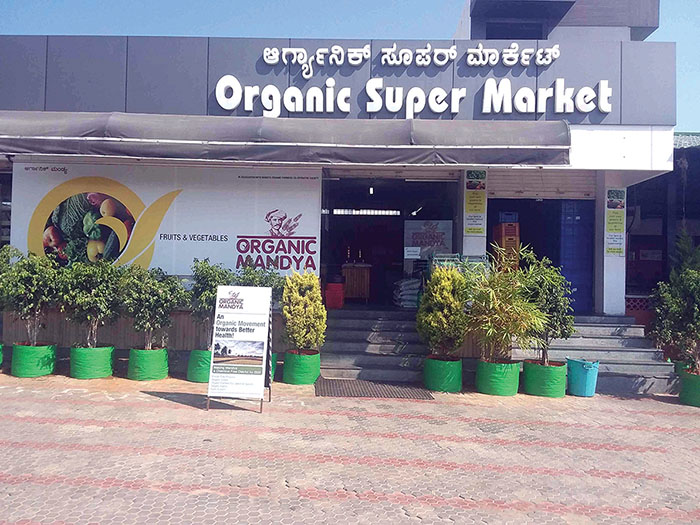
“The Sweat Donation programme is another initiative of ours which we started in Bengaluru. We just appealed to the young work force, ‘why do you waste your sweat in the gym, come work in the field, help a farmer. Your goal is to become healthy, at the same time your sweat will not go waste, it will help farmers.’ So many techies are coming for this programme,” he said.
Finally, by infusing money we started this company Organic Mandya to create
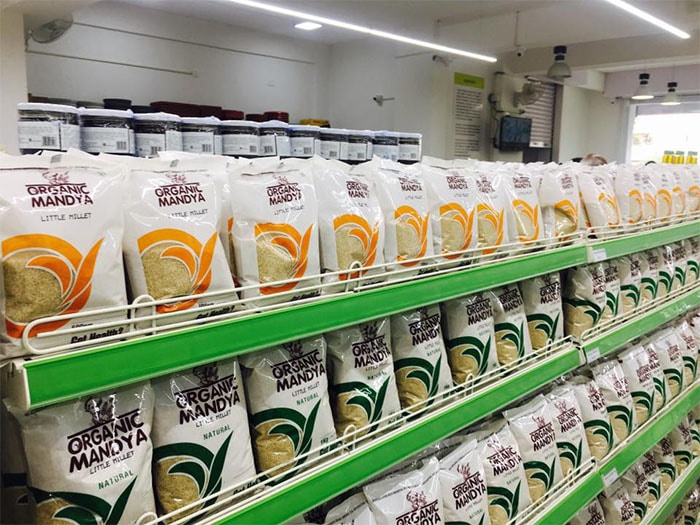
But why we chose the name is because Mandya is called Sugar City and the problem now is 55 per cent of the people here have diabetes. Hence, we wanted to change the name of the district to make it look healthier and thus the brand name Organic Mandya. Apart from this, the goal is also to see that ‘I make Mandya District Chemical-free by 2020,’ signed off Madhuchandan.
Desi Milk
Firmly believing that the milk of HF and Jersey Cows (Bos Taurus) are harmful to man’s health, Madhuchandan decided to introduce Desi breed cow (Bos Indicus) milk in the market. He started procuring milk from Siddapur and Thithimathi in Kodgau where desi cows (Nati hasu-local breeds) graze in the forest which is a natural fodder unlike the feed with chemicals that Jersey cows eat.
“In the name of milk revolution, each Jersey cow started yielding an abnormal 40 to 50 litres of milk. But the problem started as those who drank this milk of HF and Jersey, which contained A1 proteins, had gastric symptoms apart from migraine and sinusitis,” he said.
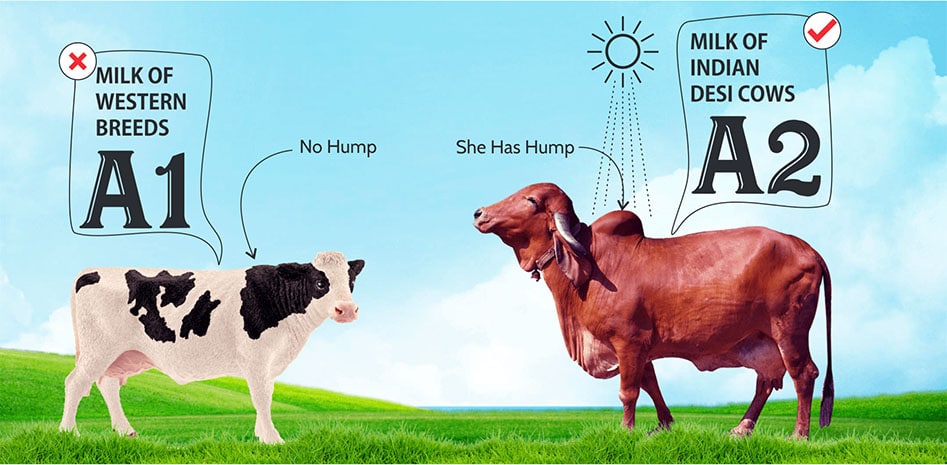
“However, it is proven that in the desi cow breeds which contains A2 proteins such health issues are not there. For instance, in Australia the milk of cows with A2 proteins is patented and sold at premium rates,” he added.
Asked how much milk he procures daily, Madhuchandan said, “We procure 1,200 to 1,300 litres of milk daily from Siddapur, Thithimathi and a few other places and send it to Bengaluru where we sell it at Rs.90 a litre. We have also introduced this milk in Mysuru and selling it at Rs.75 a litre. The milk is being delivered at home.”



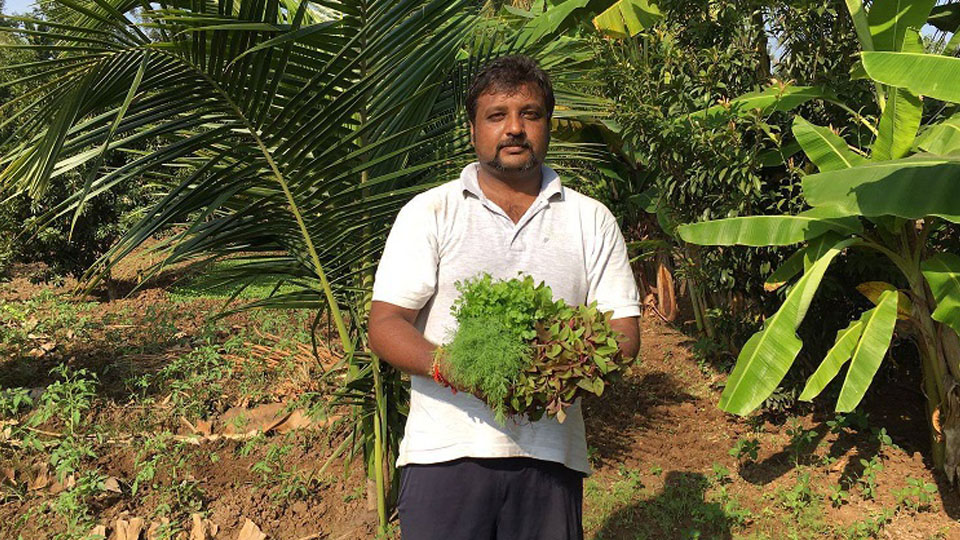
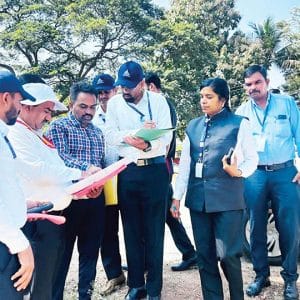
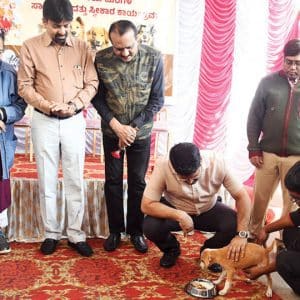

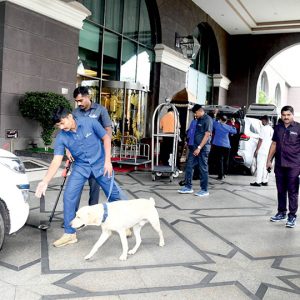
Isn’t this old news probably couple of years old?
I have heard mixed opinion on this guy so far.
In last Assembly election he was aspiring to get a BJP ticket from Mandya, once they rejected he showed his frustration openly getting wrath from local BJP workers.
I cant help to think whether this article ‘an image building’ article for next election?